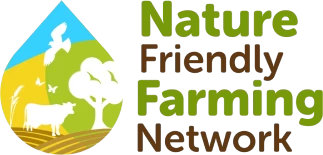At Guardswell Farm in central Scotland Anna Lamotte and her husband, Digby, have established an orchard as part of their mixed farming enterprise. They share their reasons for growing fruit trees and explain why this approach could benefit other nature-friendly farmers.
Guardswell Farm in Perthshire is a 180-acre mixed farming enterprise run by Anna Lamotte and her husband, Digby. Part of the farm is home to an orchard, carefully nurtured to supply fruit for Digby’s artisan cider business. The orchard is managed in line with Guardswell’s nature-friendly farming principles.
Anna and Digby share their journey in establishing and developing the orchard, highlighting how their approach could be adapted by other nature-friendly farms looking to incorporate fruit growing into their operations.
The basics - How was the orchard established?
Anna and Digby’s interest in establishing an orchard at Guardswell began with historical research, which revealed that apple growing was once far more common across central Scotland than it is today.
The only remaining trace of this at Guardswell was three old apple trees still standing near the farmhouse. Inspired by this legacy, they decided in 2019 to start their own orchard from scratch and have since planted around 2,700 trees.




